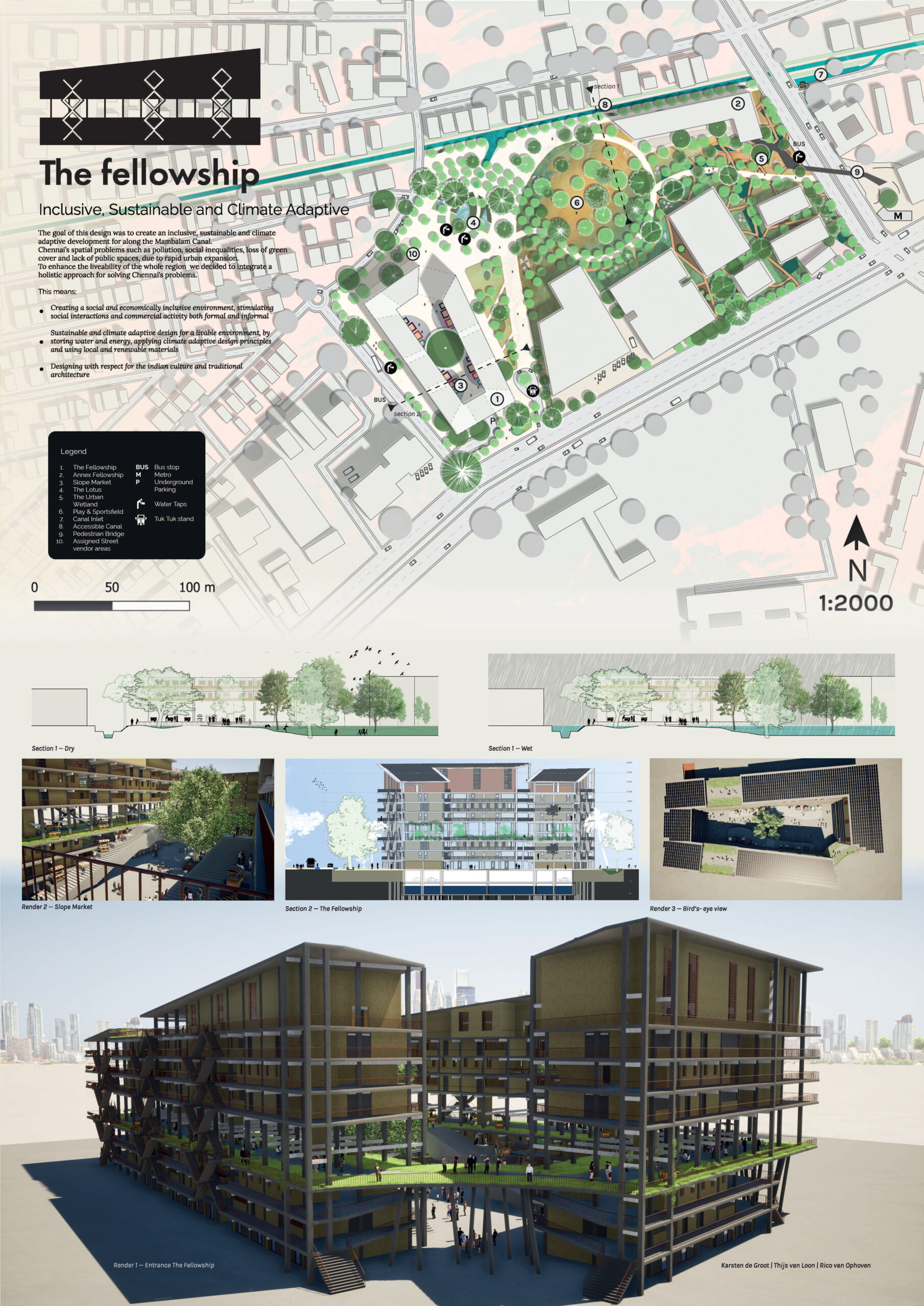The Fellowship: Inclusive, Sustainable and Climate Adaptive
Published on 20 January 2020
Introduction
This urban design project presents a vision for an inclusive, sustainable, and climate-adaptive development along the Mambalam Canal in Chennai, India. The design addresses current challenges faced by the neighborhood, including poor spatial quality, lack of public spaces, and the need for climate resilience in this rapidly developing area. By enhancing the livability of the whole region, the project aims to create a vibrant community space that serves multiple purposes while respecting the local context and environmental conditions.
Project Context
Located adjacent to the Mambalam Canal in Chennai, the project site presents unique opportunities and challenges:
- Integration with one of Chennai’s major waterways
- Potential for water management and flood mitigation
- Need for community spaces that work in Chennai’s tropical climate
- Opportunity to enhance urban connectivity and public life
Key Features
- Creation of social and functionally inclusive environments that respond to Chennai’s cultural context, where social interaction and commercial activity both formal and informal can thrive
- Sustainable and climate adaptive design specifically tailored for Chennai’s climate, incorporating:
- Monsoon water management
- Heat mitigation strategies
- Natural ventilation principles
- Design that respects and celebrates local Tamil culture and traditional architecture
Gallery

Site plan showing integration with Mambalam Canal
Design Elements
1. Climate-Responsive Architecture
- Shaded walkways and public spaces
- Cross-ventilation in buildings
- Rain water harvesting systems
- Green roofs and vertical gardens
- Climate buffer zones along the canal
2. Community Integration
- Traditional street market spaces
- Flexible community gathering areas
- Connected pedestrian networks
- Public spaces designed for multiple uses
- Integration with existing neighborhood fabric
3. Environmental Strategies
- Canal edge treatment for flood resilience
- Water retention and management systems
- Native vegetation and biodiversity
- Sustainable materials suitable for local climate
- Energy-efficient design principles
4. Social Infrastructure
- Mixed-income housing units
- Local commerce opportunities
- Recreational facilities
- Educational spaces
- Cultural gathering places
5. Urban Connectivity
- Enhanced canal-side pedestrian routes
- Connected green spaces
- Improved neighborhood accessibility
- Integration with public transport
- Safe and inclusive street design